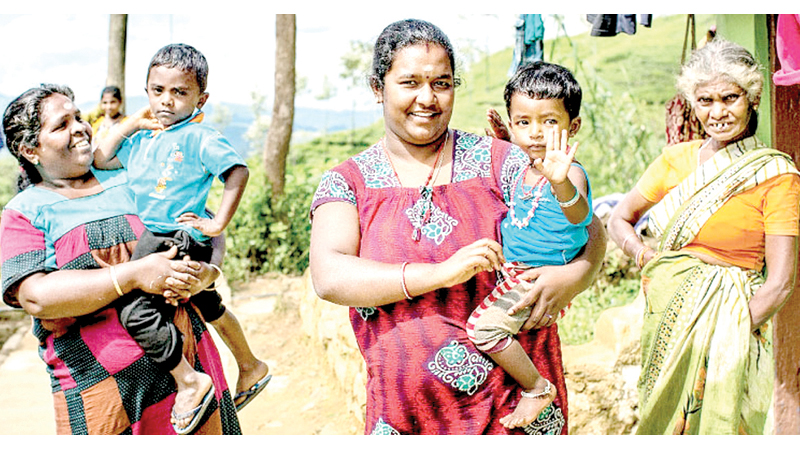This article is based on an interview with Senior Lecturer Department of Sociology, University of Kelaniya, Sudheera Jayaweera, on the “International Day for the Elimination of Violence Against Women” (November 25) and the “World Day for the Prevention of and Healing from Child Sexual Exploitation, Abuse and Violence” (November 18).
The “International Day for the Elimination of Violence Against Women” and the “World Day for the Prevention of and Healing from Child Sexual Exploitation, Abuse and Violence” have more significance than any other time in the recent history of the globe. The day serves to raise global awareness about the prevalence and various forms of violence that women experience.
This day indicates the urgent need for gender equality and empowerment of women and efforts to combat child sexual exploitation. Children and women are considered as most vulnerable members of the society. International campaigns against child sexual exploitation often focus on strengthening legal frameworks and policies to prosecute perpetrators and provide support for victims. The day underscores the importance of education and prevention programs to equip children with knowledge and skills to protect themselves and foster a society that does not tolerate such abuses.
Problems and difficulties
Addressing the multifaceted challenges of child exploitation, violence, abuse and crimes against children demands a dual focus on prevention and recovery. The International Day for Prevention and Recovery serves as a strong reminder of our collective responsibility to safeguard the well-being and future of children worldwide.
 In the realm of prevention, awareness emerges as a powerful tool. Widespread campaigns are imperative to educate families, children and communities about recognising signs of abuse and exploitation. For example, some children and their parents do not know about the ways that a child can be abused or prevention precautions. Stigma and shame play a crucial role from the victim’s side.
In the realm of prevention, awareness emerges as a powerful tool. Widespread campaigns are imperative to educate families, children and communities about recognising signs of abuse and exploitation. For example, some children and their parents do not know about the ways that a child can be abused or prevention precautions. Stigma and shame play a crucial role from the victim’s side.
Nowadays, online exploitation has become a major issue. Prevention programs should address this. We all know that new generations are socialised with digital devices such as mobile phones and laptops, and the risk of online exploitation has doubled. Addressing economic disparities and vulnerability due to poverty requires good governance and community-based initiatives. Moving beyond prevention, recovery efforts are essential to heal the scars left by exploitation and violence.
Trauma and its long-term effects necessitate robust rehabilitation programs, emphasizing mental health support for child victims. Day by day, it seems children become more isolated from their families, friends and communities. New technologies also play a vital role in youngsters’lives emancipation from real-world situations and becoming cyber beings.
Prolonged isolation may lead to social withdrawal and create an environment where children feel unable to disclose instances of abuse.
Stopping violence against women and children requires a multifaceted approach that involves individuals, communities and governments, which focuses on socio-cultural and technological aspects. Addressing sexual violence against women and children from a sociological perspective involves understanding the deep-seated cultural and historical factors that contribute to such violence. Implementing educational programs that challenge traditional gender roles and cultural norms is important.

Sudheera Jayaweera
Perpetuating violence might be a positive intervention. Launching social norms, and campaigns that challenge harmful beliefs and promote positive cultural practices may be useful. Community-based initiatives can challenge harmful cultural practices with promoting the communities in dialogue and action against violence might be a fruitful strategy.
Media literacy and advocacy are other important aspects we should focus on regarding the above issue. We need to develop media literacy programs that can critically examine the challenge. For media, those who normalise sexual violence or entertain and promote such violence, responsible media reporting should be encouraged. In addressing sexual violence against women and children, technological advancements play a crucial role in prevention, intervention and support. Forensic technology, digital forensics, biometric technologies, online counseling and artificial intelligence surveillance technologies seem significant aspects to approach.
Roles of individuals, communities and Governments
Dealing with violence must be a collective effort from individual to government required intertwined effort. Individuals can play a pivotal role by raising awareness, reporting suspect cases to the police, and supporting victims.
Individual support to the government is essential for law enforcement to implement educational programs and community-based prevention activities. There is an overlap between the responsibilities of individuals, communities and governments in creating a protective and safe environment for children and women.
Communities serve as the nexus where these efforts converge, fostering safe spaces, engaging in community policing and conducting education campaigns. For instance, you can think about sexual harassment taking place in public transportation against women and children. Preventive roles should be interconnected and law enforcement and policymaking (government role) should link with community feedback and reaction (community role) and then it should connect to the individual (moral and behavioural). This may lead to a more effective and efficient reaction against violence.
Areas which need immediate attention
To comprehend the areas requiring immediate action, we must gain a comprehensive understanding of the overall landscape of child abuse and violence against women in Sri Lanka. If we consider the official statistics of recent years about child abuse, it provides a clue to identify specific areas that we should focus on.
From January 1 to December 31 in 2022, 10,497 cases were repoted to the National Child Protection Authority. In 2023, there were 7, 878 child abuse and other child-related complaints reported until October.
From the cases were reported in 2022, cruelty to children, sexual harassment and neglect of children cases are generally high. For instance, in 2023, 328 grave sexual abuses have been reported.
Over 2,000 cases of cruelty to children have been reported during the past two consecutive years.
From January to December 2022, 257 cases of rape of women over 16 years of age have been reported in Sri Lanka.
People in the Ratnapura and Anuradhapura districts seem most vulnerable to rape cases. The statistics indicate the areas to which immediate attention should be given. It is important to strengthen and promote accessible reporting mechanisms to encourage persons to report instances of child abuse properly.
Hotlines such as 1929, and 119 play a valuable role in reporting the cases.
Ensuring that law enforcement agencies such as special police units which engage in child abuse investigation, should be well-equipped and trained to handle sensitive cases.
Sri Lanka needs more scientific training for investigative authorities to take appropriate legal action against the perpetrators.
The Child Protection Authority (CPA) and Victim Protection Authority provide a commendable service in providing support for victims.




